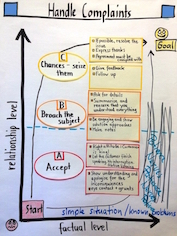

Lesions of special sites such as face, palms, soles, and mucosa, have location-specific criteria for malignancy and they cannot reliably be analyzed using the ABCD rule. There can be exceptions to the ABCD rule of dermoscopy.įalse-positive TDS can be seen in: melanocytic nevi with a lentiginous component, nevi with globules, nevi with a papillomatous component, Spitz/Reed nevus, congenital melanocytic nevus, nevus spilus, agminated nevus, recurrent melanocytic nevus and ink spot lentigo. The threshold for benign lesions is: 5.45. The individual scores of each component of the ABCD rule of dermoscopy is multiplied by the coefficients 1.3, 0.1, 0.5, and 0.5, respectively, obtaining a TDS. In contrast, 73% of melanomas reveal four or more structural components.Ĭalculation of the total dermoscopy score (TDS) Ninety percent of melanocytic nevi reveal three or fewer structural components. In general, melanomas display more dermoscopic structures as compared with nevi. The asymmetry score (0-2) is multiplied with 1.3 in order to calculate the A contribution to the TDS. If there is asymmetry in both axes, then the asymmetry score is 2. If there is asymmetry in only one axis then the asymmetry score is 1. If asymmetry is absent with respect to both axes within the lesion, then the asymmetry score is 0. The distribution of colors and structures and the contour of the lesions are evaluated on either side of each axis.

The lesions should be bisected in perpendicular axes.
Abcd method skin#
It is a reliable method that improves the diagnostic performance of nonexperts evaluating pigmented skin lesions. The total dermoscopy score (TDS) is calculated using a linear equation, with this TDS, a grading of lesions is possible with respect to the probability that the lesions under investigation are malignant. This algorithm, described by Stolz, is based on multivariate analysis of four criteria (asymmetry, border, colors and different structures) with a score system. The ABCD rule is the first dermoscopy algorithm created to help differentiate benign from malignant melanocytic lesions.


 0 kommentar(er)
0 kommentar(er)
